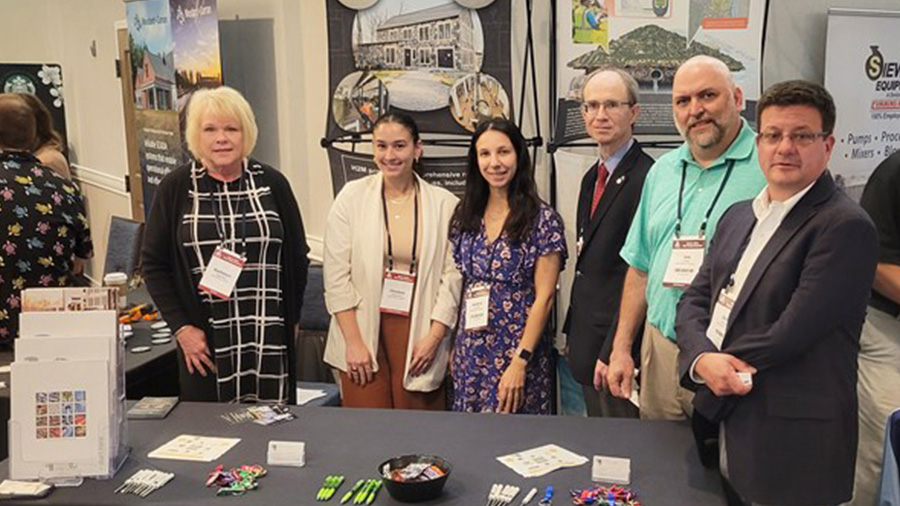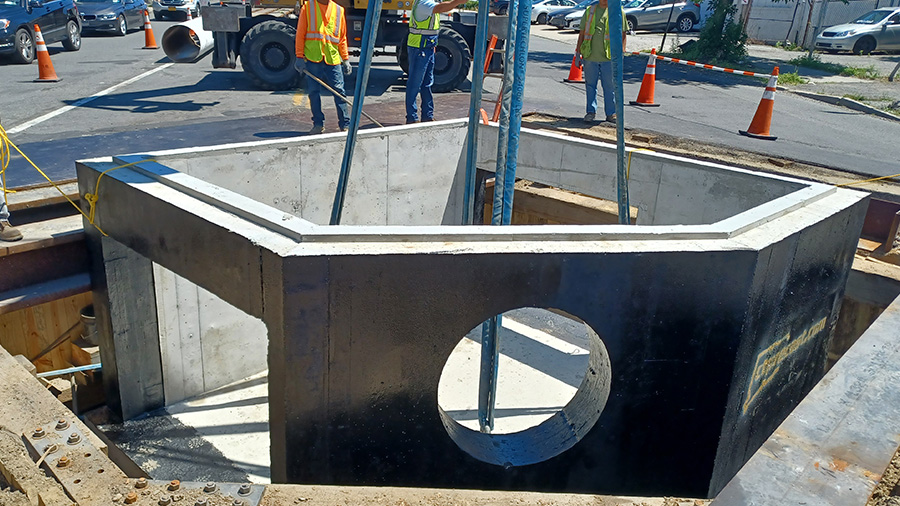Esports Are Growing in Popularity: Here’s How Schools Should Design For Their Needs
By: Dana Gearrity, R.A., LEED AP BD+C | Senior Project Architect at H2M architects + engineers
Nicholas Orsini| Staff Designer at H2M architects + engineers
Esports, or electronic sports, are a genre of competitive multiplayer video games. This genre includes virtual reconstructions of physical sports (such as FIFA’s soccer or Madden’s NFL football series) as well as fantasy and sci-fi options, such as League of Legends or Overwatch. Similar to physical sports, esports have tournaments in which players compete for money, sometimes as much as tens of millions of dollars.
One report from the Pew Research Center found that 72 percent of American teenagers play video games and 75 percent of gamers play online, mostly with friends. Video games and esports are a popular social hobby, and it’s one that’s accessible to a wide variety of physical ability levels. Some esport student-athletes have started to earn scholarship opportunities and high schools are beginning to form teams equipped with the same degree of resources as their physical sports teams. However, the two have very different needs.
Esports rooms don’t need to be big. At around 800 square feet, they’re comparable in size to a traditional classroom. Some school districts may choose to transform their libraries into multimedia centers by incorporating an esports section separated by a movable partition. In these cases, when esports are in a shared space, acoustic panels with high noise coefficients provide critical dampening to avoid disturbing adjacent areas. Inside, the sound system should feel like a movie theater, but soft flooring and furniture can spare the surrounding areas from audio overflow. While drop ceilings are common in many schools, maximizing ceiling height allows for the installation of suspended baffles that aid in sound absorption.
Access to online games and the ability to play against other players depend upon server resources. If a server has too many players on it at once or if a player is too far from their regional server, the game may experience high latency, or a delay between player input and the virtual character’s output. Colloquially known as lag, even 100 milliseconds of latency is enough to exclude players from certain competitive circuits. A strong Wi-Fi connection is critical for reducing latency. To offer students the best chance of success, the design should include hookups for ethernet cables or Wi-Fi boosters.
Elaborate computer systems that often feature multiple monitors require additional heating, ventilation, and air conditioning (HVAC) to prevent overheating and damaging internal components. Esports rooms are typically designed with dedicated cooling systems to enable modular temperature control and flexibility without impacting the rest of the building.
A school looking to add esports facilities should plan to upgrade its power supply infrastructure. PCs, monitors, and HVAC consume a lot of electricity. Additionally, although these rooms tend to be dark to improve screen colors, LED lighting with dimming controls can reduce temporary conditions such as fatigue and eyestrain. The popular arcade aesthetic may also feature neon lighting. These spaces require more power than the average classroom, which can contribute to higher costs.
The cost of PC gaming systems can sometimes surpass $5,000 apiece, so many school districts are adding audience seating to capitalize on the spectacle of esports tournaments in anticipation of community events. Spectator seating could be a mix of couch, bench, and high-top seating to simulate the different elevations of bleachers in a confined space. Modular, flexible, or mobile furniture allows for easy reconfiguration based on different events or programmatic needs. Multiple large monitors fitted together on a feature wall can create the same effect as a jumbotron in a sports arena, giving spectators prime views.
Seating for the players is just as important. Training for competitive esports can require as much time as training for physical sports, but sitting for that long can lead to lower back pain and spine issues. Ergonomic, high-backed, padded chairs and adjustable desks promote healthy posture and protect students’ health. The configuration of seating should be able to accommodate individual and team events, both for practice and competitions. Tables need to have enough space for the student’s computer, keyboard, mouse, and any other equipment. Depending on distance to the nearest outlet, the design should specify tables with mounting options and wire ways to accommodate the power supply.
The National Federation of State High School Associations (NFHS) is a nonprofit that has historically written the rules of competition for most American high school sports and activities. Since the rise in the popularity of esports, NFHS has published a guide on the benefits, opportunities, and safety measures for esports teams. Professional designers can help school districts parse through information about best practices and offer suggestions for how to implement them. The goal is to create comfortable and safe spaces that encourage students of all interests and passions to participate in school activities.



